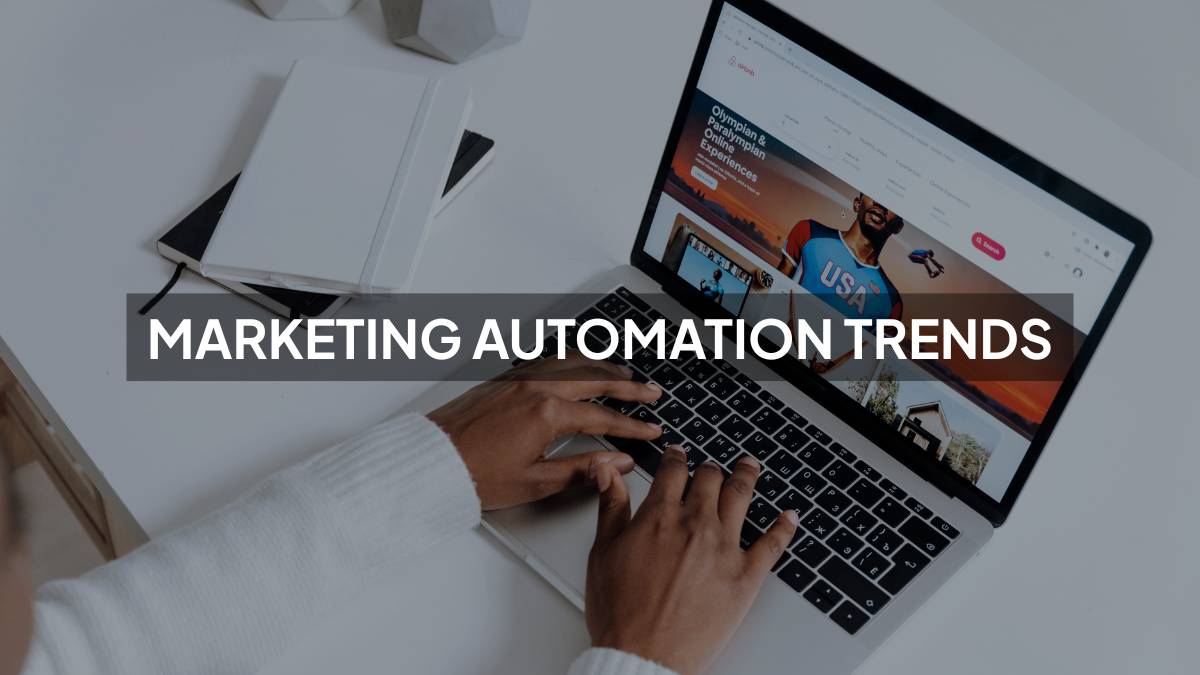Table of Contents
What Are Marketing Automation Trends?
Marketing automation isn’t new, but the way it’s being used in 2025 feels very different from even a few years ago. It used to be all about scheduling emails or setting up a few simple workflows. Now, it’s central to how businesses run campaigns, engage with customers, and honestly, how they stay competitive.
When people talk about “marketing automation trends,” what they’re really talking about is how quickly the tech is changing, and how customers are changing too. People don’t wait around for a generic newsletter anymore. They expect brands to respond to their behavior almost instantly, and to do it in a way that actually feels relevant.
That’s why following these trends matters. It’s not just about saving time or cutting costs anymore (although those are big perks). It’s about using automation to connect with people in smarter, more natural ways. Businesses that lean into this are usually the ones pulling ahead.
Importance of Marketing Automation in 2025
If 2024 was the year more businesses started experimenting with automation, 2025 is the year it stopped being optional. The competition is just too intense. Customers want quick, personalized experiences, and no team, no matter how good, can do that manually at scale.
Some of the main reasons automation has become so critical:
- It keeps communication consistent, no matter how big the audience gets.
- It helps turn raw data into actual insights you can use.
- It gives sales and marketing teams more qualified leads instead of wasting time on the wrong ones.
- It frees up time for strategy instead of endless manual work.
The other big thing is adoption. Every type of business, small startups, mid-size companies, big enterprises, has some form of automation running now. And the tools themselves are way more advanced. Instead of relying on cookie-based targeting (which is disappearing fast), platforms are leaning on first-party data and smarter personalization.
Bottom line: Automation isn’t a “growth hack” anymore. It’s table stakes.
Also Read: Benefits of Marketing Automation
Key Marketing Automation Trends in 2025
1. Smarter, AI-Driven Automation
AI isn’t some far-off thing, it’s built into most tools already. The difference in 2025 is how it’s being used. Predictive analytics lets marketers spot what a customer is likely to do before it happens. Email platforms are deciding when to send, what subject lines work, and even what content to show, based on each person’s behavior.
And chatbots? They’ve gone from clunky FAQ bots to pretty decent assistants that can guide someone from “just looking” to booking a call or even completing a purchase.
2. Personalization and Real-Time Journeys
Generic campaigns don’t cut it anymore. Marketers are working with first-party data (the stuff customers actually share with you) to build much tighter audience segments.
The real shift is journeys that change in real time. If someone abandons a cart, they don’t just get one standard email. They might get a series of messages or offers that change depending on what they do next, whether they come back to browse, click an ad, or ignore everything. It’s more fluid than the rigid workflows we used a few years back.
3. Omnichannel Experiences
People bounce around between email, social, WhatsApp, and SMS all the time. They don’t think about channels, they just expect the brand to keep up. That’s why omnichannel automation has exploded.
The best examples are when conversations move smoothly. Say you DM a brand on Instagram, then later get an email from them, it should feel like one continuous interaction, not two disconnected ones. Big brands like Nike and Sephora have nailed this, but more mid-sized companies are catching on now.
Also Read: Omnichannel Customer Journey
4. B2B vs B2C Automation
The goals are similar, better engagement, more conversions, but the execution looks different.
- B2B automation is usually about long-term nurturing. Think lead scoring, webinars, account-based marketing, and syncing with sales teams. A lot of touchpoints before a deal closes.
- B2C automation leans more on speed. Behavioral triggers like “you viewed this product” or “you hit 200 loyalty points” drive quick actions, buying, redeeming, signing up.
Both depend on automation, just with different rhythms.
Also Read: B2B vs B2C
5. Data Privacy
Privacy is shaping everything right now. With GDPR, CCPA, and the end of third-party cookies, marketers are having to rethink how they collect and use data.
The trend in 2025 is pretty clear: consent-first automation. Customers want control, and businesses are realizing that being transparent about data isn’t just required, it actually builds more trust.

Enroll Now: Advanced Generative AI for Marketing Course
6. CRM & Sales Integration
One of the best changes has been how well automation platforms now integrate with CRMs. Whether it’s HubSpot, Salesforce, or ActiveCampaign, the data flow is smoother.
This helps in two ways: marketing can hand over better leads, and sales has the full picture when they reach out. For customers, it feels seamless, they don’t have to repeat themselves at every stage.
7. Email is Smarter, Not Dead
Email isn’t going anywhere, but it’s way more sophisticated now. Features like predictive send times, automated drip campaigns that adapt to engagement, and subject line optimization are making emails feel more personal and less spammy.
8. Predictive Analytics
This deserves its own mention. Predictive analytics lets brands forecast customer lifetime value, recommend products automatically, and even spot churn before it happens. It changes automation from reactive to proactive.
9. Conversational & Voice Automation
With smart speakers and voice search, conversational automation is becoming more common. Some brands are even letting prospects “talk their way” through qualification instead of filling out long forms.
10. What’s Coming Next
The next wave seems to be around no-code automation tools, creative generation (automated ads, visuals, copy), and more real-time generative capabilities. These trends aren’t just hype, they’re already rolling into platforms bit by bit.
Also Read: Marketing Automation Strategy
How to Choose the Right Marketing Automation Platform in 2025
Picking a platform can be overwhelming because there are so many. But it gets easier if you focus on a few things:
- Features you actually need (not the bells and whistles you’ll never touch)
- Whether the tool can grow with you or if you’ll outgrow it fast
- How well it plays with your existing stack, CRM, sales tools, e-commerce
- Pricing. Some charge by features, others by number of contacts. It adds up quickly.
The big names in 2025 are still HubSpot, Salesforce, ActiveCampaign, Klaviyo, Iterable, and a few others. But the “best” platform depends on your business type and goals. The smartest approach? Run a small test campaign on two different platforms and see which one fits how your team actually works.
Best Practices for Implementing Marketing Automation Trends
1. Don’t try to automate everything on day one
Most people mess this up. They go wild setting up 20 workflows and then can’t keep track. Start small, one or two automations that actually matter (cart recovery, lead nurture). Nail those first.
2. Keep it human
Automation should save time, not make your brand sound like a robot. Add some personal touches. Let sales jump in when it feels right. Customers can spot “cold automation” a mile away.
3. Measure what’s happening
Just because it’s automated doesn’t mean it’s effective. Look at the results. Open rates, conversions, drop-offs. Kill the stuff that’s not working and double down on what is.
4. Think of it like gardening
You don’t just plant and walk away. You prune, you water, you tweak. Automation flows need the same care. Otherwise they get outdated fast.
5. Align sales and marketing
If your sales team doesn’t know what automated messages your leads are getting, things get messy. Keep the teams in sync so customers don’t feel like they’re talking to two different companies.
6. Set goals first, tools later
A lot of folks buy shiny platforms and then try to figure out what to do with them. Flip it. Decide the outcome you want, then pick the tool that helps you get there.
Conclusion: The Future of Marketing Automation Trends
The way I see it, marketing automation in 2025 isn’t really about tools. Tools will keep changing. It’s about how brands use them to connect with people in a way that doesn’t feel forced.
Yes, AI is shaping a lot of it. Yes, personalization is only getting sharper. And omnichannel experiences, those are basically expected now. But the core idea is still simple: right message, right time, right person. Automation just makes that possible at scale.
If you’re staying updated, testing new trends, and keeping the customer at the center, you’ll be fine. If not… competitors won’t wait for you to catch up.
FAQs: Marketing Automation Trends
What are the biggest marketing automation trends in 2025?
AI-driven personalization, predictive analytics, omnichannel automation, tighter CRM integrations, and consent-first data practices are leading the way.
How is AI changing marketing automation?
It’s less about reacting, more about predicting. AI helps figure out what customers are likely to do, and automation steps in to act on it.
Which industries benefit most?
Pretty much all of them. Retail, SaaS, healthcare, finance, it just looks a little different in each space.
B2B vs B2C automation, what’s the difference?
B2B is slower, more nurturing, often tied into account-based marketing and sales teams. B2C is faster, more trigger-based, like abandoned carts, loyalty programs, or personalized offers.
How do I start with these trends?
Don’t overcomplicate it. Pick one or two workflows that would actually move the needle for your business. Test them. Improve them. Then add more.

